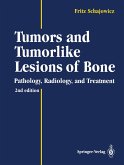From the Preface:
About every ten years a new book appears on any given medical specialty subject. Naturally, this is not because the entire body of knowledge on that specialty is overhauled every ten years but because the progress made over a decade usually warrants expressing new perspectives on quite a few diseases. Orbital oncology certainly qualifies as a subspecialty that merits an update every decade. At least two or three excellent textbooks on orbital tumors have been written since the mid-1980s. This book reports advances in knowledge about orbital diseases and their treatment and offers an up-to-date, single-volume reference for orbital tumors with particular emphasis on new improvements in diagnostic and therapeutic measures.
Part I comprises advances in oncogenesis and its relationship to orbital tumors. Changes in the biological behavior of diseases in the general patient population are much slower than technological advances; nevertheless, those alterations take place as well. One of the major medical issues of our time, for example, is the changes in the immunological status of individuals. This issue influences the entire field of medicine, particularly oncology, including the treatment of orbital tumors. Chapters 2 to 5 summarize these influences.
Medical genetics gained momentum during the past two decades and now affects the clinical practice of almost every discipline of medicine, including ophthalmology and orbitology. Chapters on principles of molecular genetics and immunosurveillance mechanisms of neoplasia and on the occurrence of multiplt, malignant neoplasms in retinoblastoma have been included to apply molecular concepts to clinical practice related to orbital tumors.
Advances in one discipline often directly benefit practice in another field. In orbitology, no development has been more influential than the revolution in imaging techniques, including ultrasonography, computerized tomography, and magnetic resonance methods. Four chapters in Part II are devoted to the role of imaging in diganosis of orbital tumors. Other diagnostic advances entailing immunohistochemistry, flow cytometry, gene microarray, and the polymerase chain reaction are summarized in a separate chapter on orbital biopsy.
Hinweis: Dieser Artikel kann nur an eine deutsche Lieferadresse ausgeliefert werden.
About every ten years a new book appears on any given medical specialty subject. Naturally, this is not because the entire body of knowledge on that specialty is overhauled every ten years but because the progress made over a decade usually warrants expressing new perspectives on quite a few diseases. Orbital oncology certainly qualifies as a subspecialty that merits an update every decade. At least two or three excellent textbooks on orbital tumors have been written since the mid-1980s. This book reports advances in knowledge about orbital diseases and their treatment and offers an up-to-date, single-volume reference for orbital tumors with particular emphasis on new improvements in diagnostic and therapeutic measures.
Part I comprises advances in oncogenesis and its relationship to orbital tumors. Changes in the biological behavior of diseases in the general patient population are much slower than technological advances; nevertheless, those alterations take place as well. One of the major medical issues of our time, for example, is the changes in the immunological status of individuals. This issue influences the entire field of medicine, particularly oncology, including the treatment of orbital tumors. Chapters 2 to 5 summarize these influences.
Medical genetics gained momentum during the past two decades and now affects the clinical practice of almost every discipline of medicine, including ophthalmology and orbitology. Chapters on principles of molecular genetics and immunosurveillance mechanisms of neoplasia and on the occurrence of multiplt, malignant neoplasms in retinoblastoma have been included to apply molecular concepts to clinical practice related to orbital tumors.
Advances in one discipline often directly benefit practice in another field. In orbitology, no development has been more influential than the revolution in imaging techniques, including ultrasonography, computerized tomography, and magnetic resonance methods. Four chapters in Part II are devoted to the role of imaging in diganosis of orbital tumors. Other diagnostic advances entailing immunohistochemistry, flow cytometry, gene microarray, and the polymerase chain reaction are summarized in a separate chapter on orbital biopsy.
Hinweis: Dieser Artikel kann nur an eine deutsche Lieferadresse ausgeliefert werden.
From the reviews:
"The book is finalized by an excellent overview of the current surgical and radiological management techniques, as well as recent developments in chemotherapy. ... It is a pleasure to read this comprehensive work as it is most educative for everyone dealing with orbital pathology from a clinical as well as from a scientific point of view. It certainly will have its place in every eye center, even those not directly involved in the treatment of orbital diseases." (Rudolf F. Guthoff, Ophthalmologica, Vol. 221 (5), 2007)
"The book is ... multi-authored which allows for a spread of knowledge across a wide field of relatively rare conditions. ... In summary, Orbital Tumors by Karcioglu is a very well-written and nicely illustrated book. It covers the subject comprehensively, and is current and a most approachable textbook. It would be a very useful reference for the orbital specialist, of significant interest to the generalist and an ideal text for trainees. In my opinion, the book should be held by all eye department libraries." (Paul M Rosser, Clinical and Experimental Ophthalmology, Vol. 36, 2008)
"The book is finalized by an excellent overview of the current surgical and radiological management techniques, as well as recent developments in chemotherapy. ... It is a pleasure to read this comprehensive work as it is most educative for everyone dealing with orbital pathology from a clinical as well as from a scientific point of view. It certainly will have its place in every eye center, even those not directly involved in the treatment of orbital diseases." (Rudolf F. Guthoff, Ophthalmologica, Vol. 221 (5), 2007)
"The book is ... multi-authored which allows for a spread of knowledge across a wide field of relatively rare conditions. ... In summary, Orbital Tumors by Karcioglu is a very well-written and nicely illustrated book. It covers the subject comprehensively, and is current and a most approachable textbook. It would be a very useful reference for the orbital specialist, of significant interest to the generalist and an ideal text for trainees. In my opinion, the book should be held by all eye department libraries." (Paul M Rosser, Clinical and Experimental Ophthalmology, Vol. 36, 2008)







